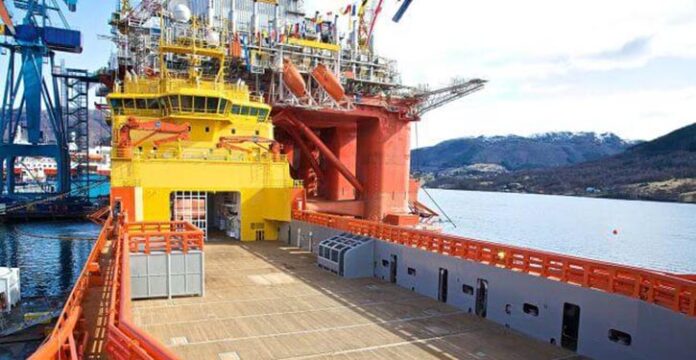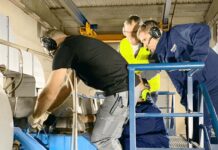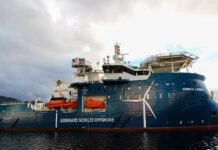Energy Storage Unit Researches finished successfully
Eidesvik Offshore is one of the most innovative shipping companies based in BØmlo / Norway. Already in 2003 the company puts in operation the worldwide first natural gas driven offshore supply vessel VIKING ENERGY.
After some years of operation the company announced: “The vessel has proved their reliability by 100% – up to now she has not failed one single hour!”
Records have shown that around 97% of energy generation (4 x Wärtsilä 6L32DF engines) has been done by natural gas. Based on these records the annual fuel consumption has been calculated by 2.880 to of LNG and 200 to of Diesel fuel. The NOx emissions amounted to 21 to annually, which is a reduction of 155 to per year, or 87.6% equivalent to Diesel operation. Also the CO2 emissions have been reduced by 21 percent, respectively 2.230 to annually. If the vessel would have used only Diesel fuel, the fuel consumption would have been 276 to per month or 3.312 to per year, resulting in ~ 10.400 to CO2!
The FellowSHIP project
Project partners Eidesvik Offshore, Wärtsilä Norway and DNV GL have recently announced the closure of the FellowSHIP research project. The cooperation has explored the use of battery, hybrid and fuel cell technology, as well as the use of natural gas in the maritime industry for over 15 years.
“Eidesvik is continuously searching for the most forward-looking, efficient and environmentally friendly ship designs and operational solutions for our fleet,” says Vermund Hjelland, Vice President Technology and Development for Eidesvik Offshore. “Upgrading four of our ships with battery systems since 2016 would never have happened without the results, experience and knowledge obtained through the FellowSHIP project.”
In 2003, the FellowSHIP project partners began laying the groundwork for marine fuel cell technology, developing a proof of concept and the basic implementation principles, all of which culminated in the installation of a prototype fuel cell on board Eidesvik Offshore’s VIKING LADY PSV in 2010. Over the life of the project, the focus shifted to demonstrating the applicability of hybrid battery power systems, especially lithium ion batteries. Now, with class rules established and the technology fully commercialized, the partners have decided that it is time to close the book on the FellowSHIP project.
“FellowSHIP has been a flagship research project,” states Bjørn-Johan Vartdal, Maritime Programme Director for Technology and Research in DNV GL Group. “The results from FellowSHIP have shaped our knowledge of battery and hybrid power on board ships and enabled the industry to implement innovations which will help to enable the next generation of more efficient and sustainable vessels.”
“Equinor’s ambition is to be a leader in carbon-efficient oil and gas production, and to reduce emissions from our logistics activities,” says Helge Såtendal, Principal Consultant, Supply Chain Management, Marine Operations for Equinor. “Batteries on platform supply vessels allow for more efficient operation of motors, reducing CO2 and NOx emissions and lowering fuel consumption.”
“FellowSHIP has been an important project for demonstrating, validating and documenting new, efficient and low-emission technologies,” says Ingve Sørfonn, Head of Technology & Development for Wärtsilä Marine Solutions, Power Conversion. “The fuel savings and emission reductions achieved during the different phases of the project have been enablers for developing the maritime industry in a more sustainable direction.”
“Battery and hybrid technology would have made an impact on shipping eventually, but looking back over these 15 years, I think we can safely say that the marine battery revolution started with the VIKING LADY,” says Øystein Alnes, Principle Maritime Engineer at DNV GL – Maritime. “This project has benefited a great deal from the funding and support of the Norwegian Research Council and is a perfect illustration of how public–private partnerships can help to bring new technologies to market and spur advances in key national industries.”




